The model name is a nod to the first overall victory by Porsche in the Paris-Dakar rally. The breakthrough triumph came in 1984 in a modified Porsche 911 – which had been fitted with an all-wheel-drive system for the first time.
More than 10,000 kilometres of off-road testing
In testing the car, the development engineers around General Project Manager Achim Lamparter didn’t only restrict themselves to intensive use of the off-road proving grounds in Weissach. In fact, the development team tested the 911 Dakar around the world under extreme conditions to the tune of more than half a million km, including more than 10,000 km off-road. The Château de Lastours test track in southern France, for example, was used to test the car’s handling on typical rally courses and fine-tune the suspension. Kilometre after kilometre of loose surfaces really put the Porsche 911 Dakar to the test.
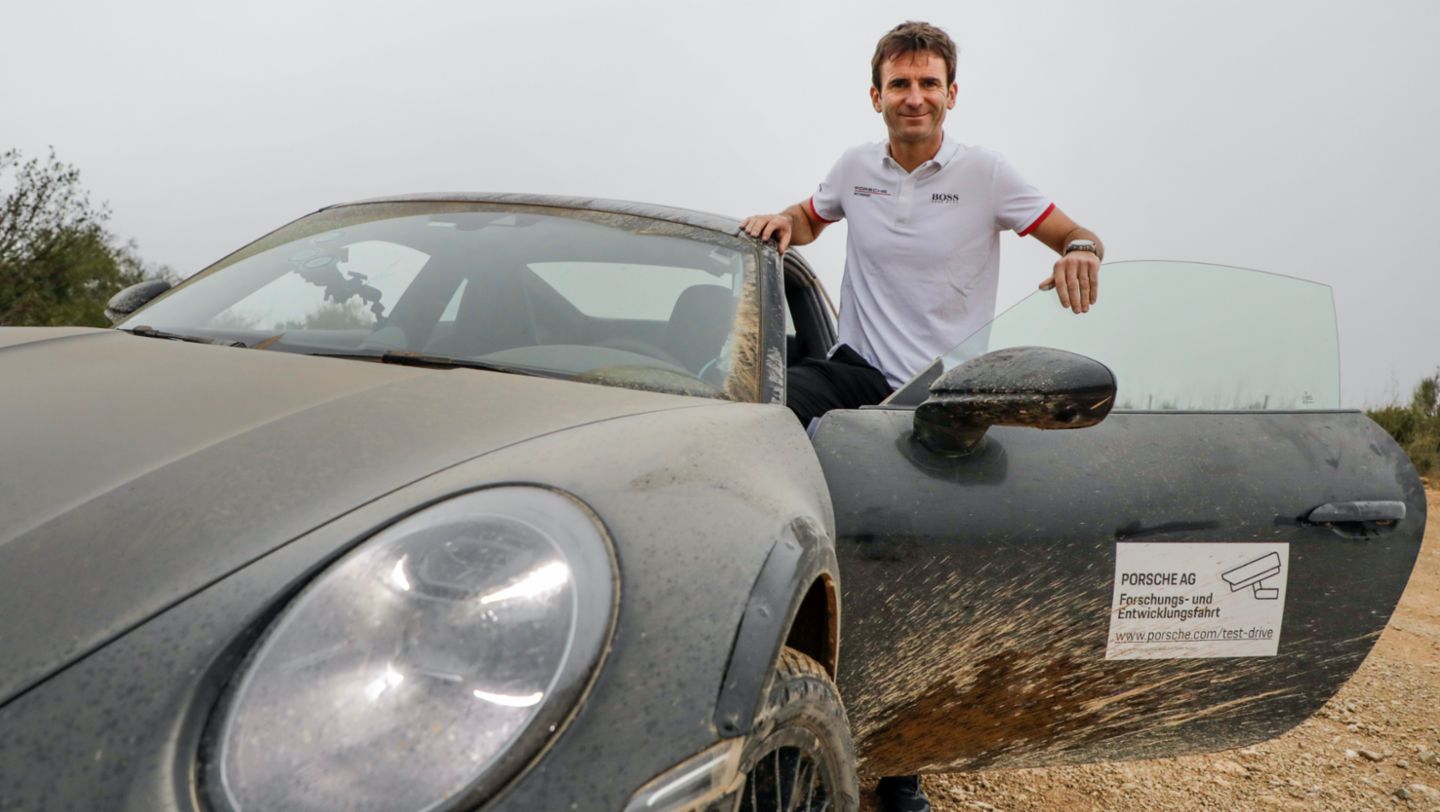
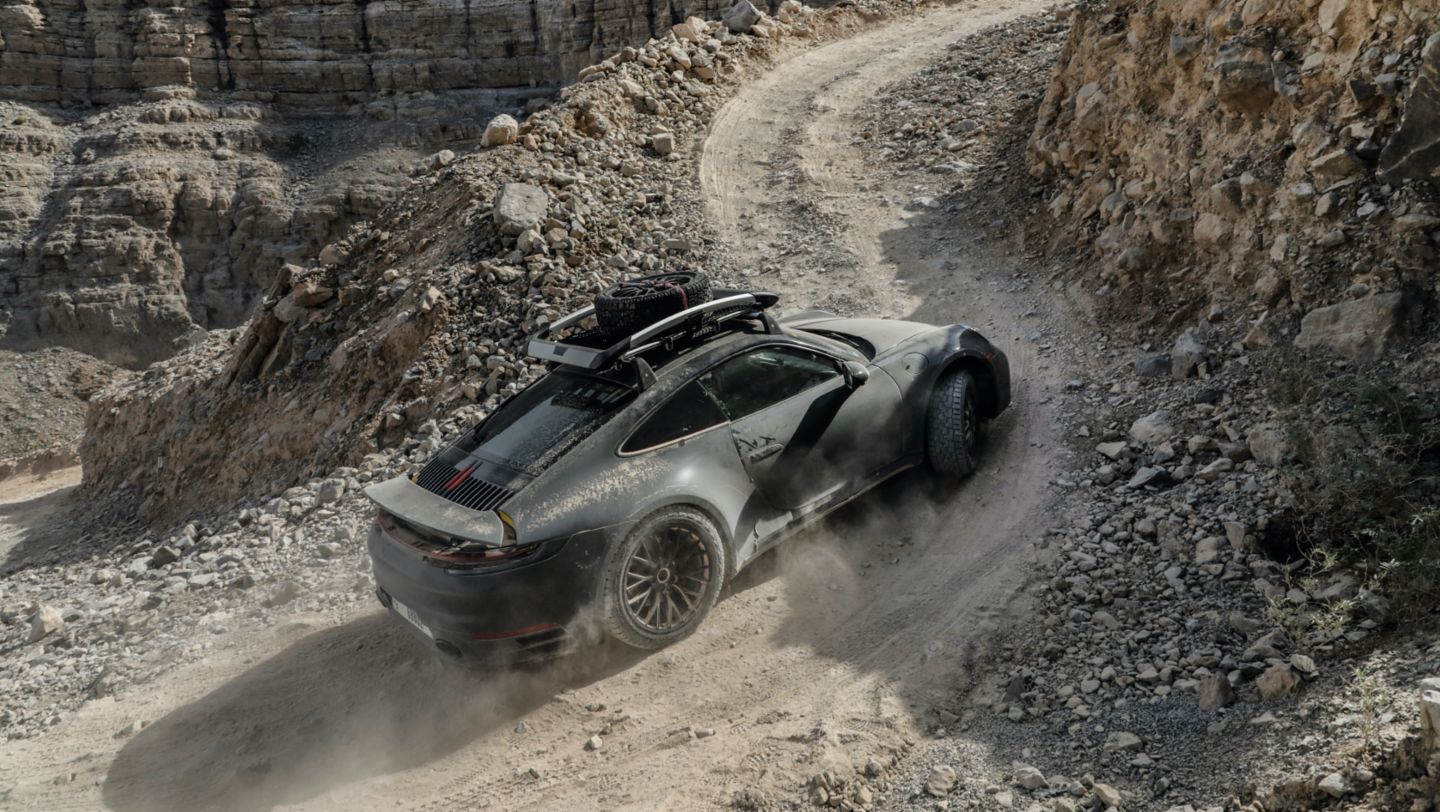
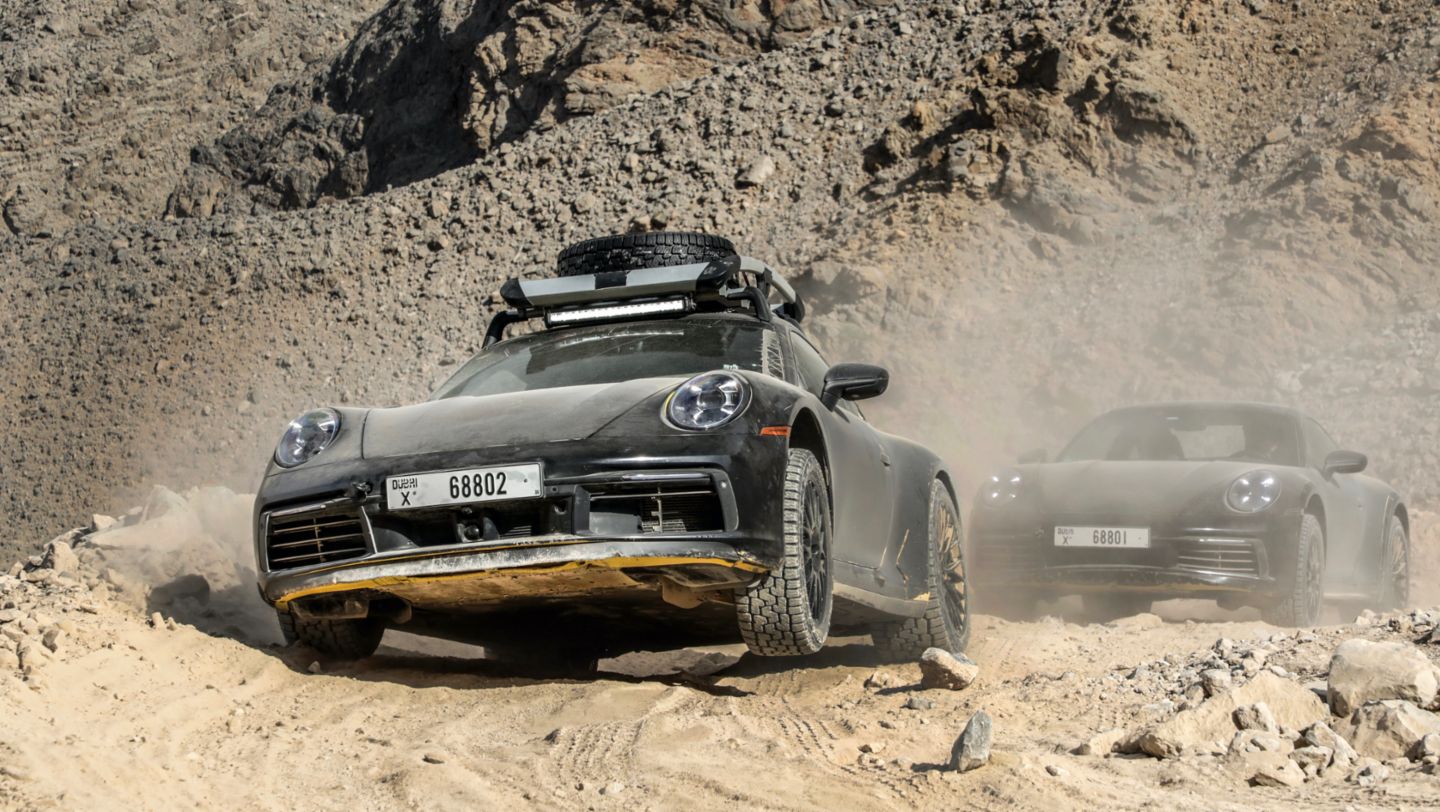
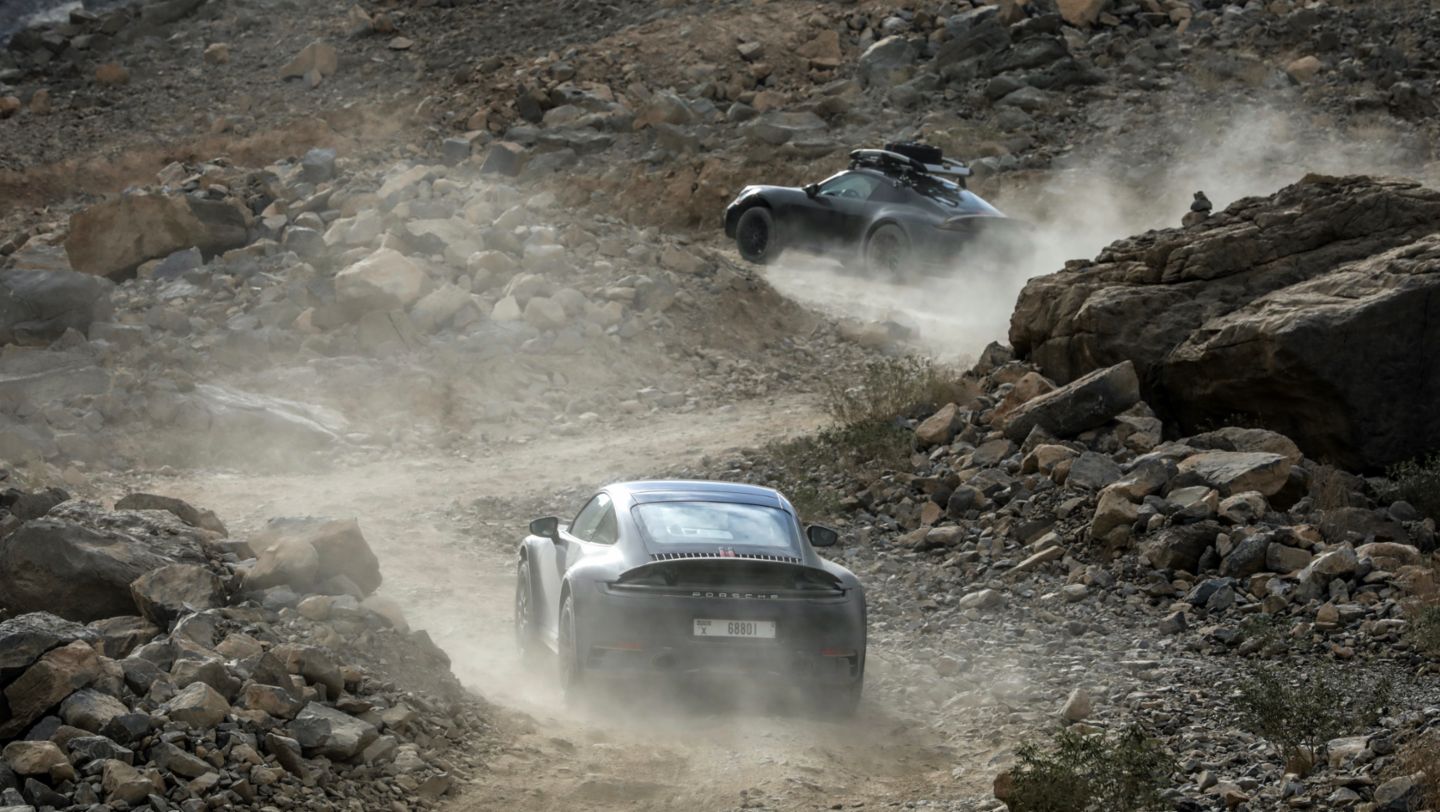
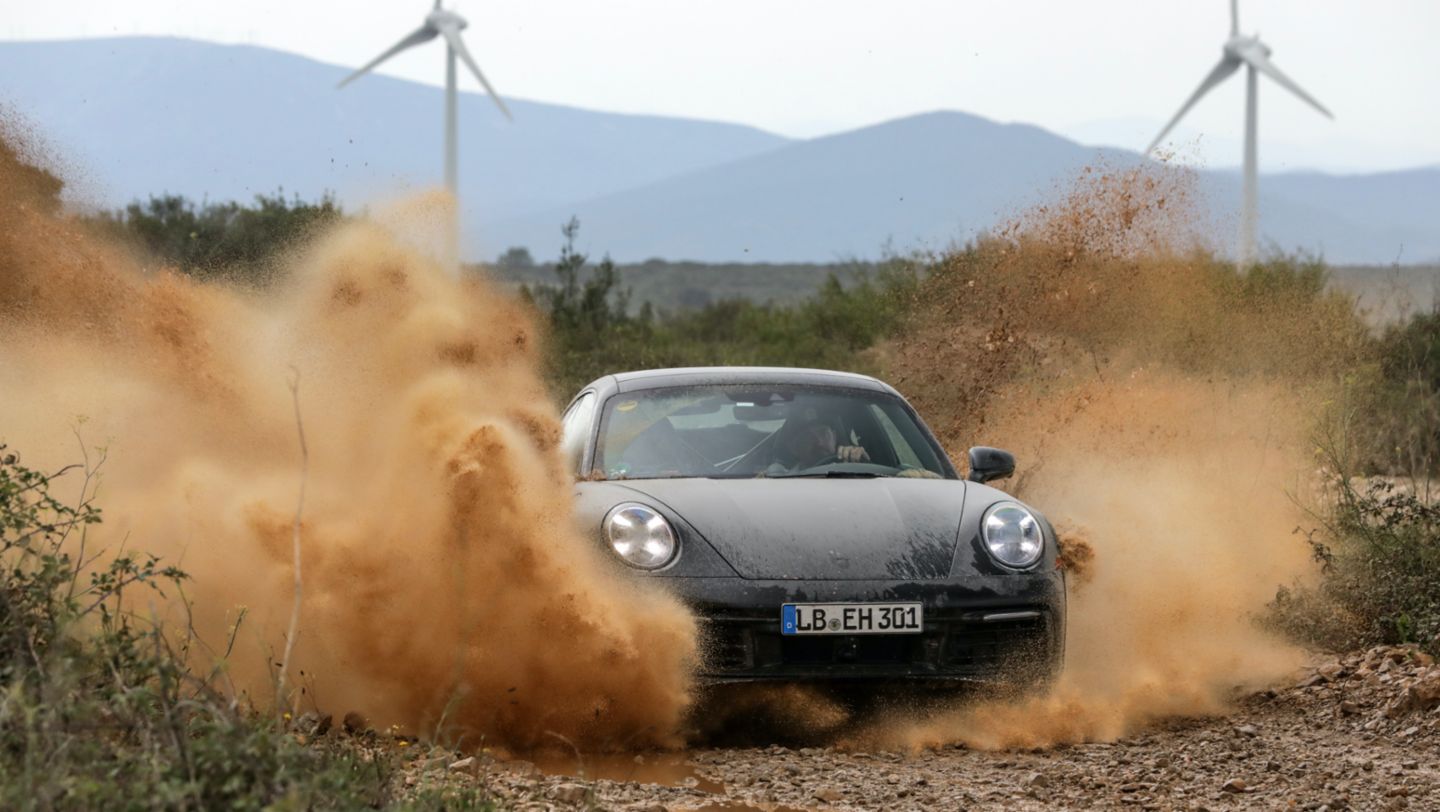
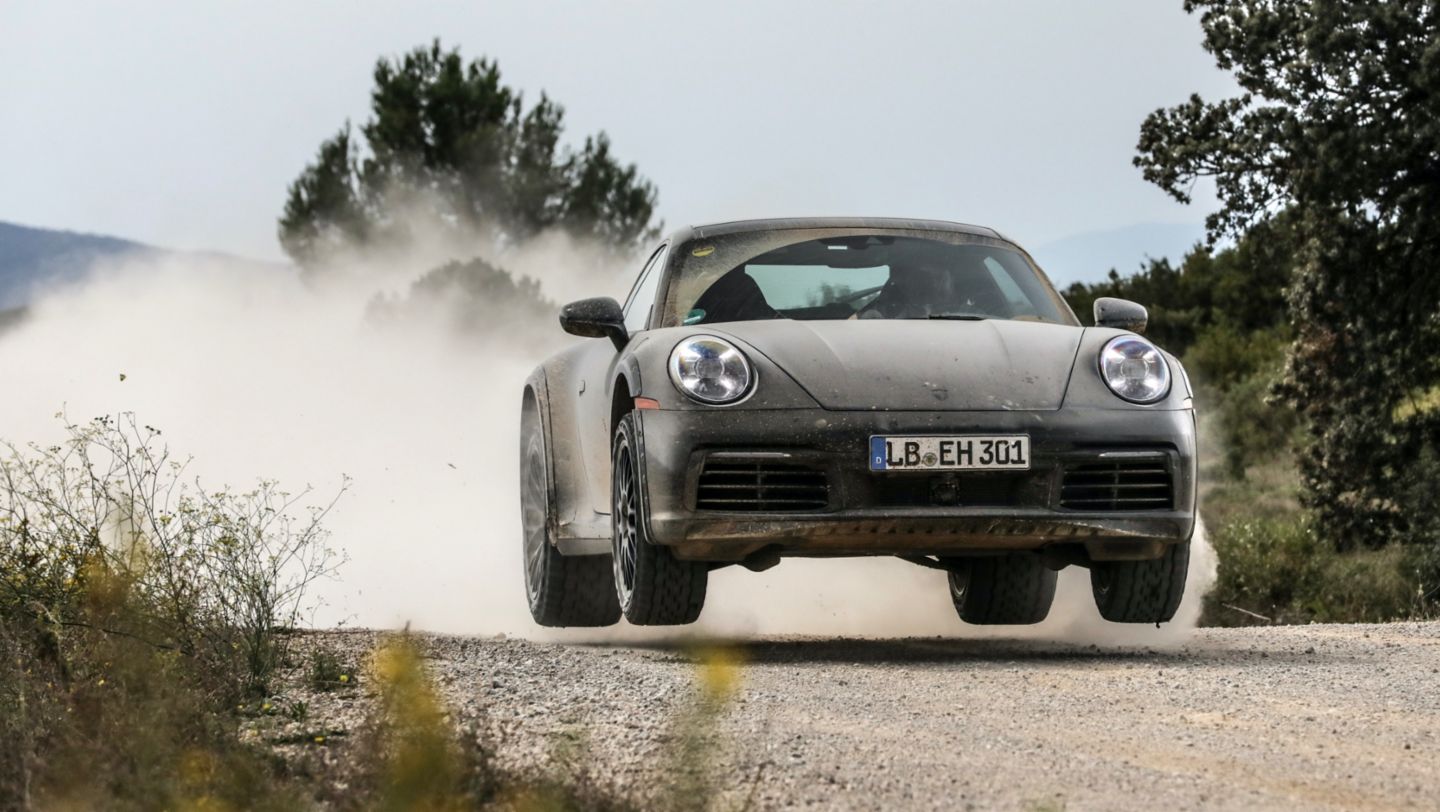


“All Dakar teams come here to test their cars in Europe before the rally,” says Porsche works driver Romain Dumas. At first, the Frenchman was puzzled by the assignment to drive a new 911 at Château de Lastours, of all places. But the astonishment quickly gave way to admiration for the Dakar’s spirited off-road performance. Even jumps were no problem for the chassis thanks to the robust design and increased ground clearance. Likewise, the 911 Dakar handled sweeping drifts with aplomb. “I knew what a 911 could do on the road,” says Dumas, “but I was absolutely stunned by how well the car performed here on the loose.”
Walter Röhrl impressed by handling on snow and ice
Two-time world rally champion Walter Röhrl naturally couldn’t resist the opportunity to put the 911 Dakar through its paces at the extensive testing grounds in Arjeplog, Sweden. The thick ice of the frozen lakes offers Porsche test drivers the ideal basis for an approximately 90 per cent closed compacted snow surface – a more realistic scenario than pure sheet ice.
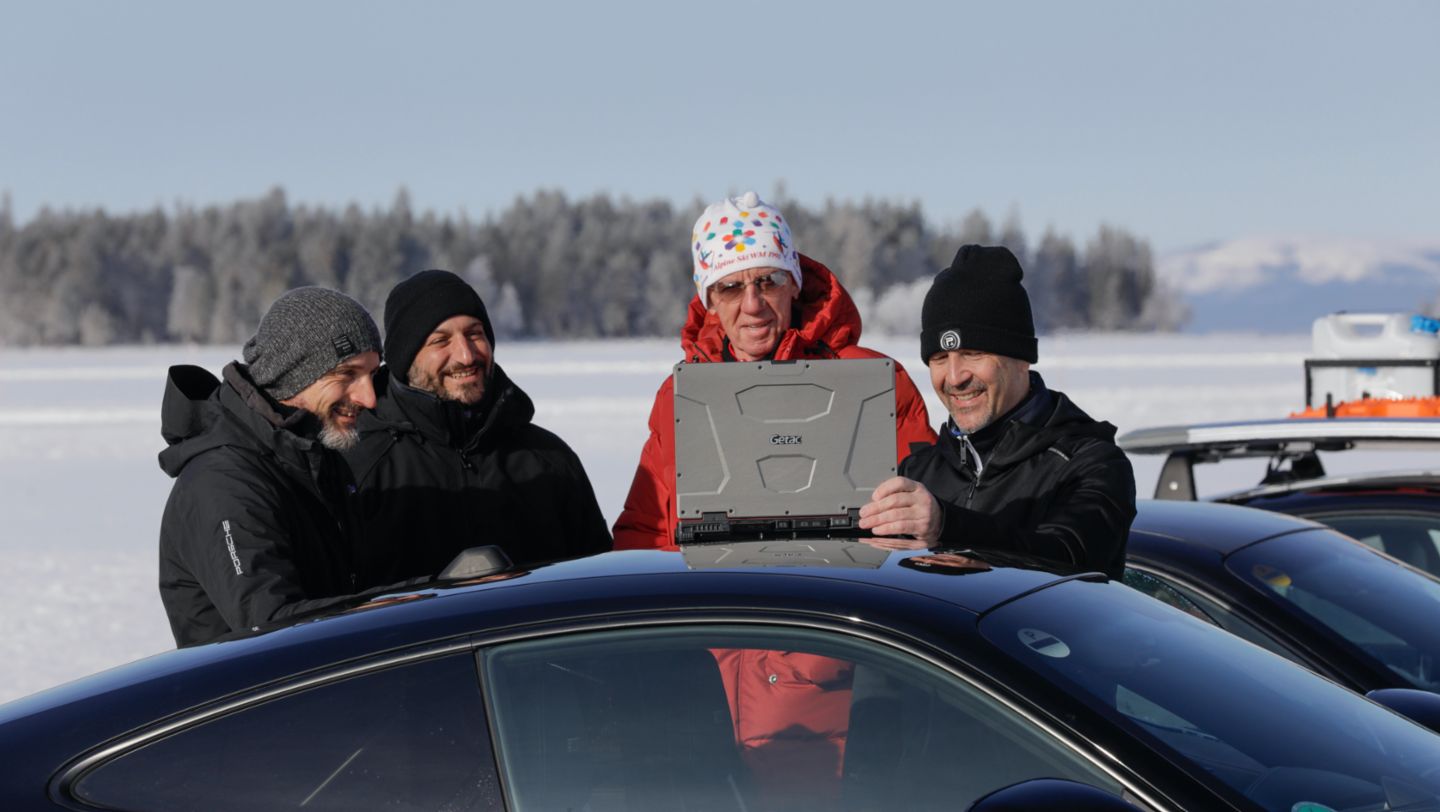


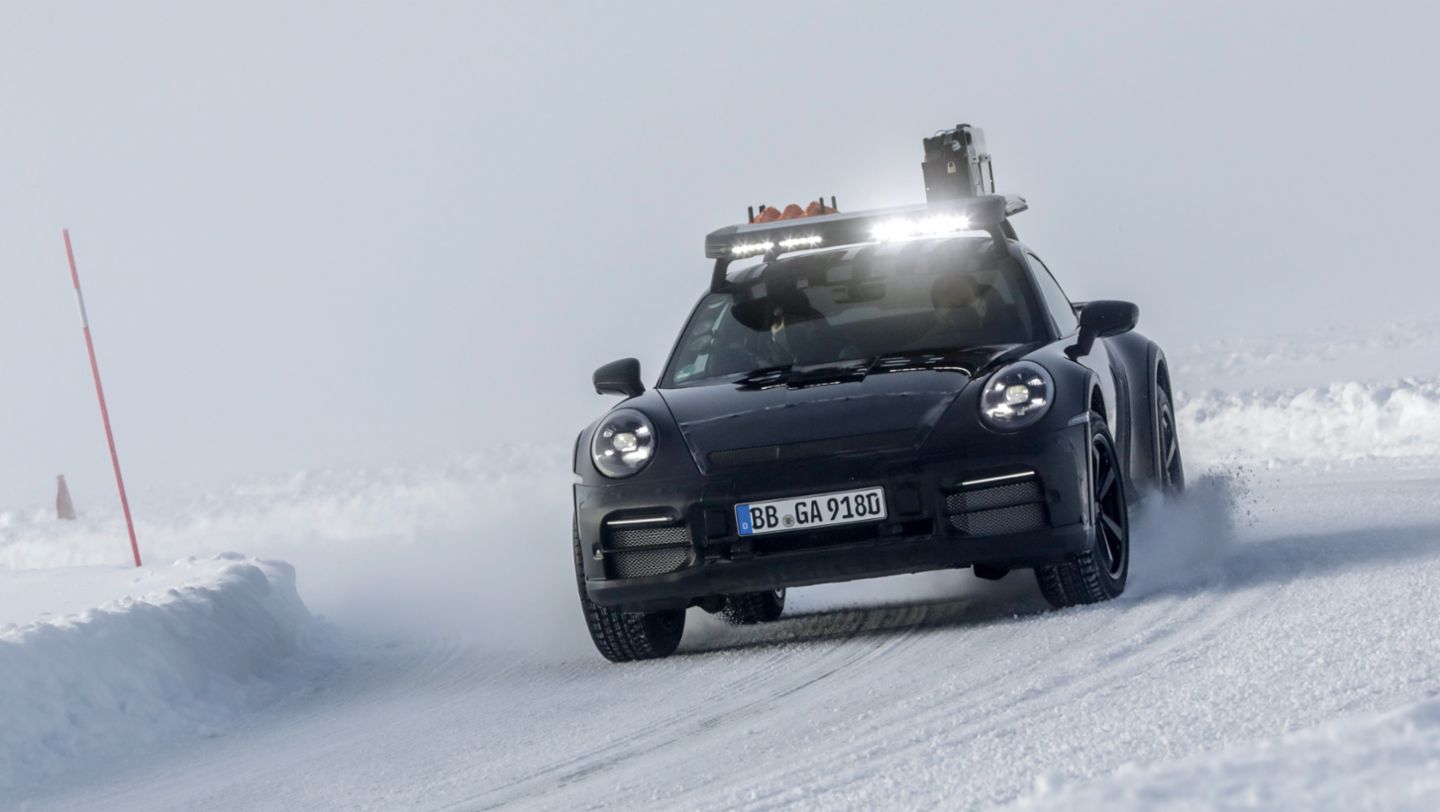


With the low friction coefficient on the snow, it was all about traction and steering precision. Even off-road, a Porsche 911 has to provide accurate feedback. Porsche brand ambassador Röhrl was enthusiastic: “The car is incredibly fun to drive,” he says. “Everything works so precisely and calmly. No Porsche customer will believe all the things you can do with this car before they’ve driven it themselves.”
Intensive test programme in rocky and sandy deserts
The new 911 Dakar also had to prove itself on fast sand tracks and high dunes. In Dubai and Morocco, test drivers mercilessly drove the off-road sports car up steep, 50-metre dunes in temperatures of up to 45 degrees Celsius time and time again.
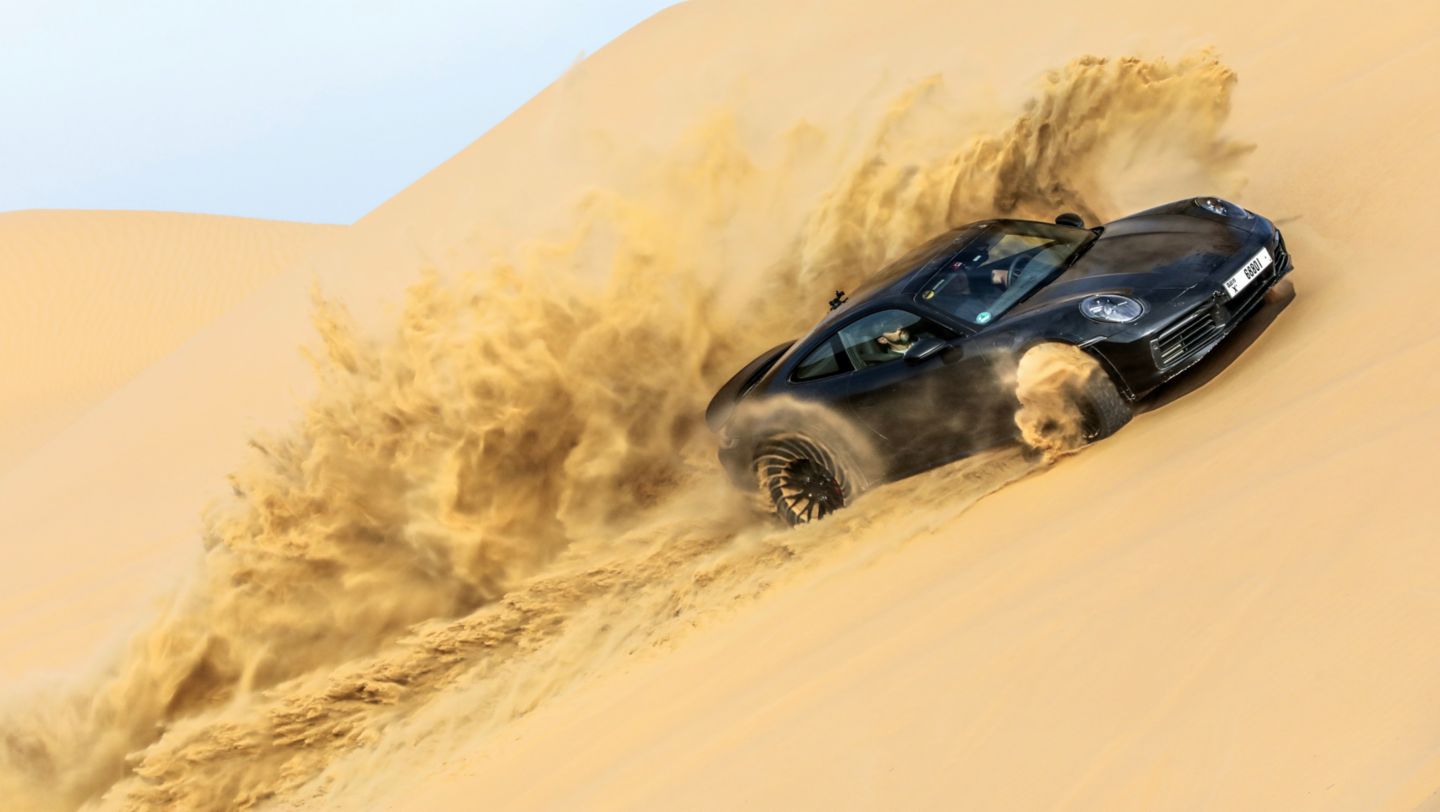
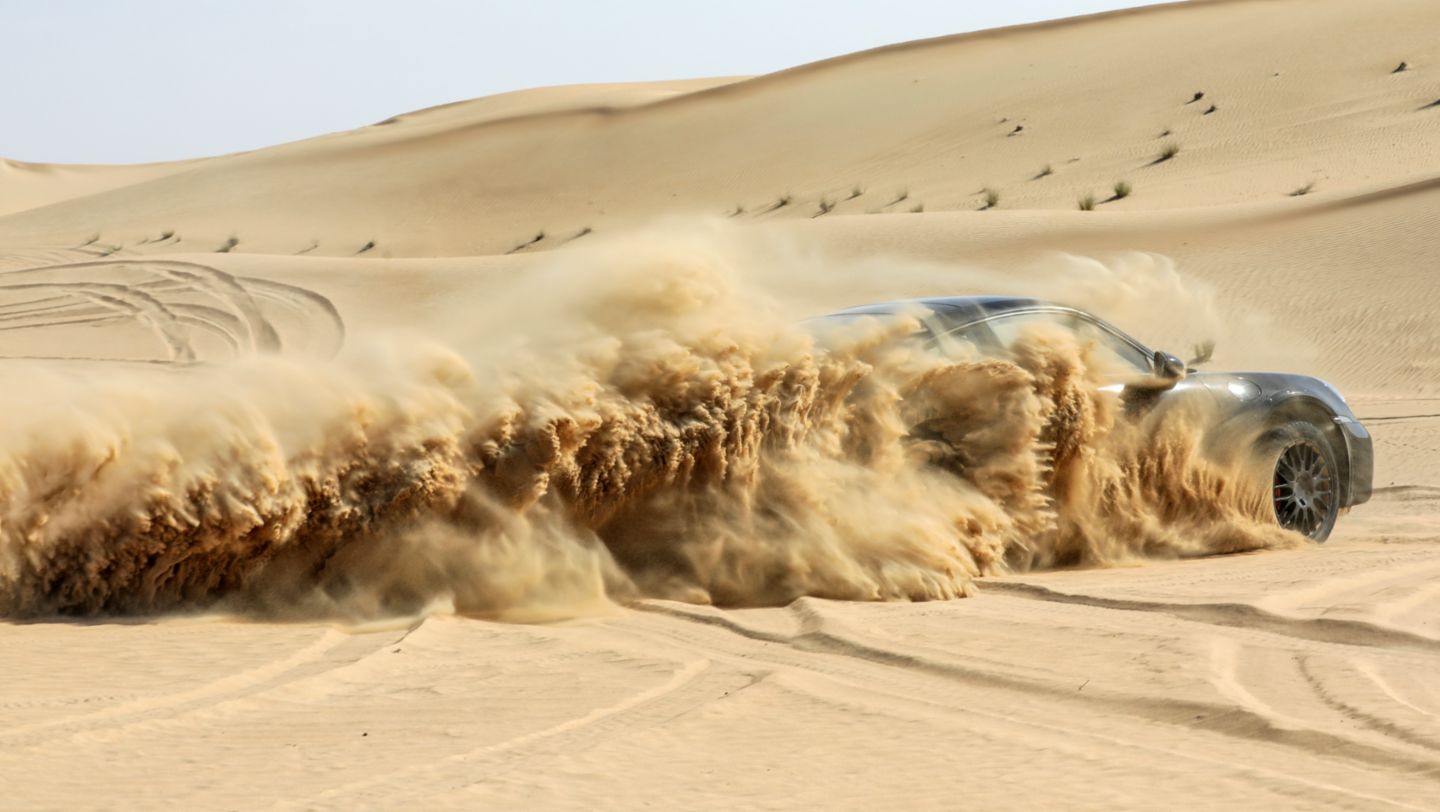
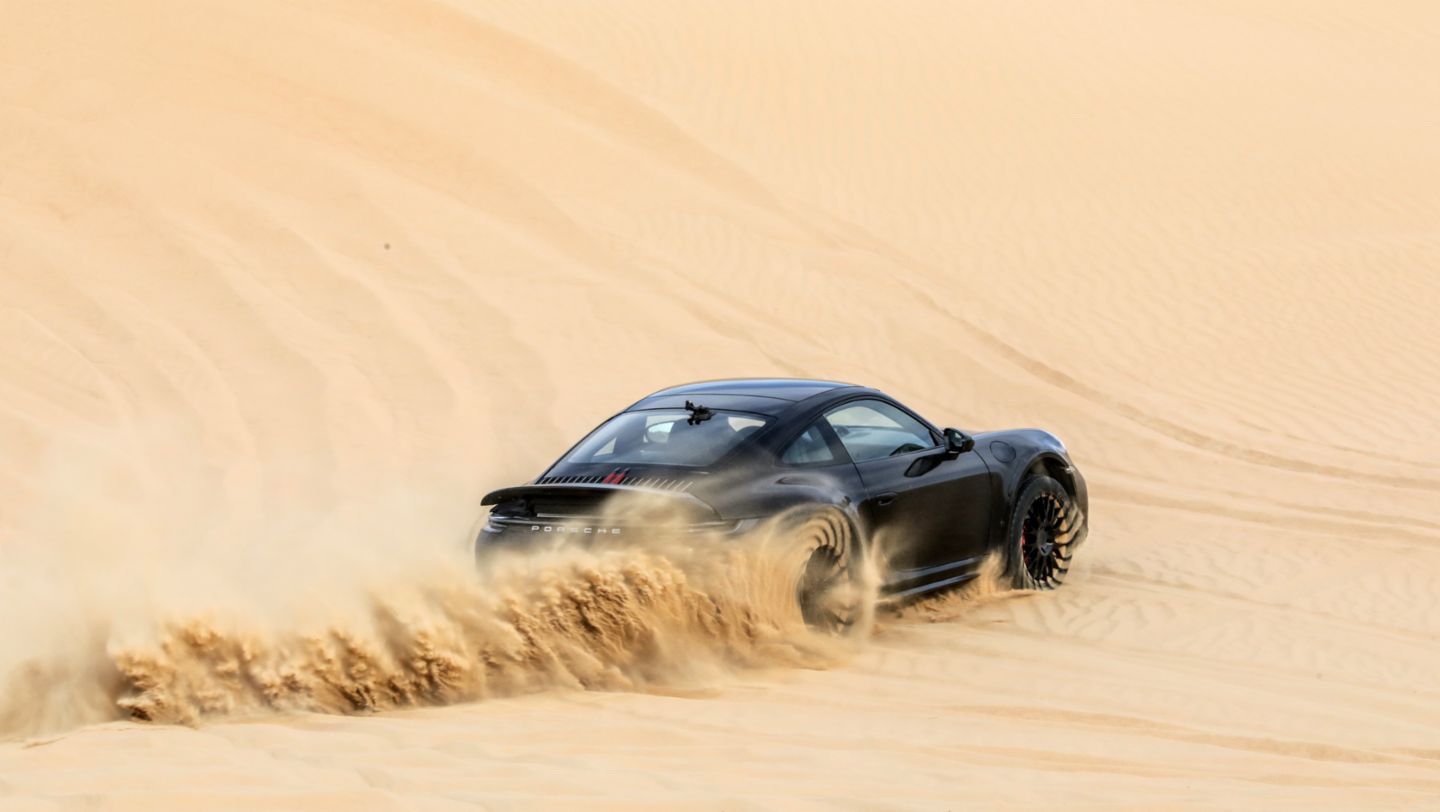


“The 911 Dakar delivered a commanding performance even in the desert,” says Frank Moser, Vice President Model Line 911/718. “Especially here, the 911 Dakar can make the most of its conceptual advantages – the combination of low weight, higher ground clearance, a powerful rear-mounted engine and the short wheelbase make for an exhilarating driving experience. I was able to experience it myself on test drives in the Sahara.”
Bergmeister and Kern surprised by driving dynamics on all surfaces
Porsche brand ambassador Jörg Bergmeister was also able to test the 911 Dakar as part of the car’s development and was surprised by the driving dynamics of the unusually high-riding sports car on both loose surfaces and asphalt: “I wouldn’t have thought that a vehicle with such ground clearance and all-terrain tyres would still feel like a Porsche 911 on asphalt,” he says. Development driver Lars Kern was also surprised during the final fine-tuning drives: “At first I didn’t have the nerve to push the car to its limits. But I am very satisfied with the handling on loose surfaces. Even the ABS is optimised for braking on gravel. It’s amazing how much traction the off-road tyres deliver. The car is a blast to drive.”











